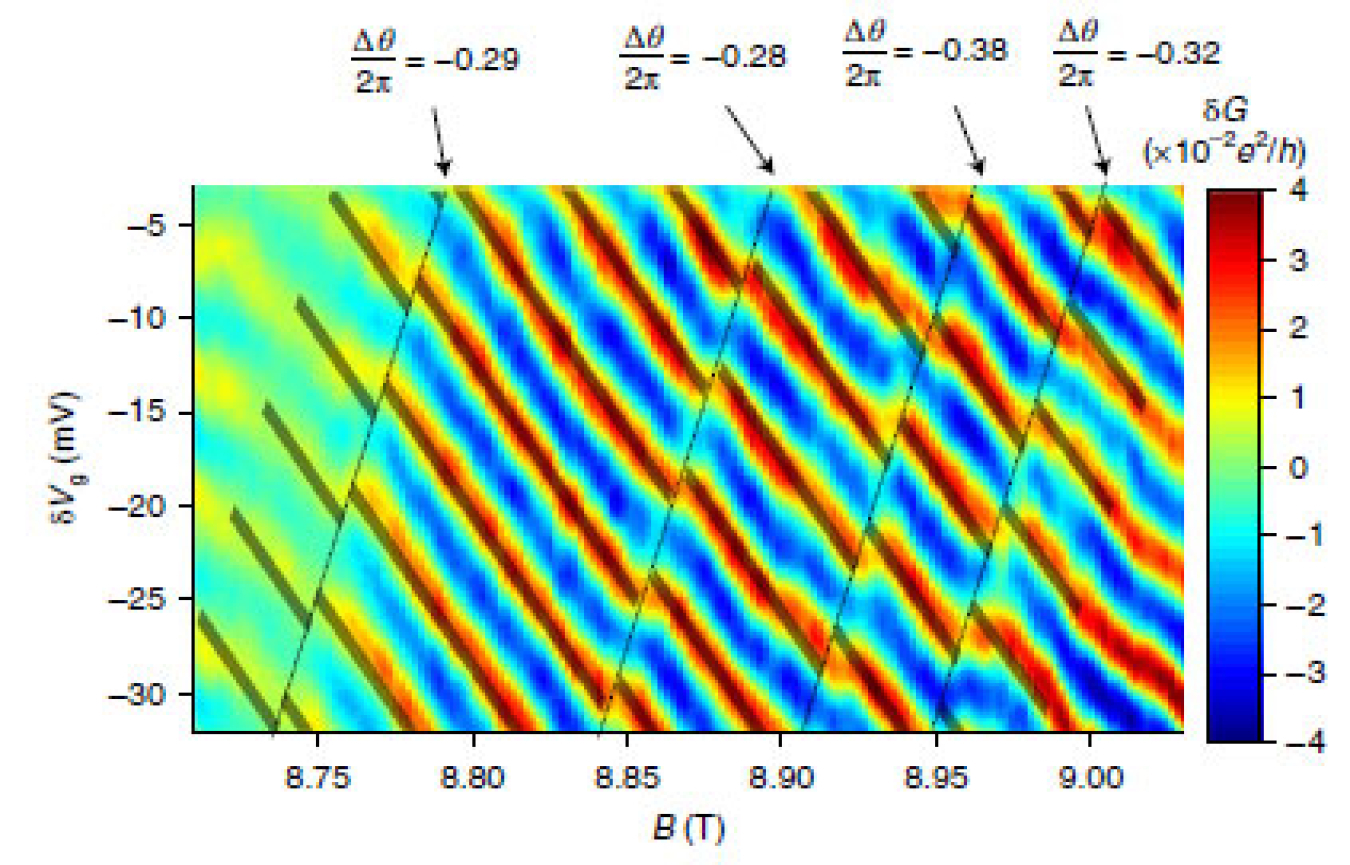
The Science
Unlike subatomic particles, quasiparticles are not actually particles. Instead, they are a concept that helps scientists describe the patterns that emerge when subatomic particles interact in huge numbers. Scientists originally believed that quasiparticles only came in two flavors: fermions and bosons. However, in the late 1970s, theorists predicted that a type of quasiparticles called anyons can form in two-dimensional systems. Researchers have now found new evidence for anyons emerging from the collective behavior of electrons. They measured anyonic braiding, a term for identical particles circling around each other in unique ways in two-dimensional systems.
The Impact
This research recorded anyons “braiding.” This braiding involves one quasiparticle looping around the other. Fermions and bosons—the other types of quasiparticles—retain no memory of a loop. However, scientists can use braiding to change the quantum state of anyons. This means anyons retain memories of their loops. Braiding can thus be applied to perform logical gate operations on a quantum bit, or qubit. These qubits are the basis of quantum computers. Many-anyon systems can build collective memories that can serve as the basis for a quantum computing approach called “topological quantum computing.” Because of how braiding works, qubits made of anyons retain their quantum coherence for long times, allowing for greater fidelity. This would help to address one of the challenges facing quantum computers.
Summary
The swapping of particles called braiding is at the heart of how this research demonstrated anyons. Swapping two quantum particles causes their quantum-mechanical wave, called the wave function, to acquire a phase factor. If the particles are fermions, the phase factor is -1. If they are bosons, the phase factor is 1. In both cases, swapping twice produces no change in the wave function. But if the particles are anyons, swapping them gives rise to a phase factor that can be any rational fraction between -1 and 1. This is a strange outcome: it means that exchanging two identical particles twice and coming back where the particles started produces a different quantum state.
To measure anyonic braiding , the researchers created an experiment to realize the Fractional Quantum Hall (FQH) state of matter, in which the electric current flows only on the edge of the sample. FQH states host quasiparticles whose electric charge is 1/3 of the electron charge. Scientists have long suspected these quasiparticles to be anyons, and braiding two of them would give a phase factor of 1/3. In the experiment, some quasiparticles were directed to flow around the standing quasiparticles in the middle of the experimental device. The looping quasiparticles acquired a phase depending on the number of standing quasiparticles encircled. Other quasiparticles were sent in a direct route experiencing no phase change. The two currents were made to interfere to yield phase sensitivity. As expected, the interference pattern showed two phase contributions. The first one is a phase produced by the magnetic field, which changes continuously. The second contribution is the anyonic phase change, resulting from adding or subtracting a single quasiparticle to the interior, and is discrete, causing jumps in the conductance. The measured conductance jumps were consistent with a phase factor of 1/3, providing convincing evidence of anyonic braiding.
Contact
Michael Manfra
Distinguished Professor, Purdue University
mmanfra@purdue.edu
Funding
This work is supported by the Department of Energy Office of Science, Office of Basic Energy Sciences. One of the researchers was also supported by Microsoft Quantum.
Publications
Nakamura, J., Liang, S., Gardner, G. C., and Manfra, M. J., Direct observation of anyonic braiding statistics, Nature Physics 16, 931-936 (2020). [DOI: 10.1038/s41567-020-1019-1]
Related Links
Welcome Anyons! Physicists Find Best Evidence Yet for Long-Sought 2D Structures, Nature News
Physicists Have ‘Braided’ Strange Quasiparticles Called Anyons, Science News
New Evidence that the Quantum World is Even Stranger than We Thought, PhysOrgNews
